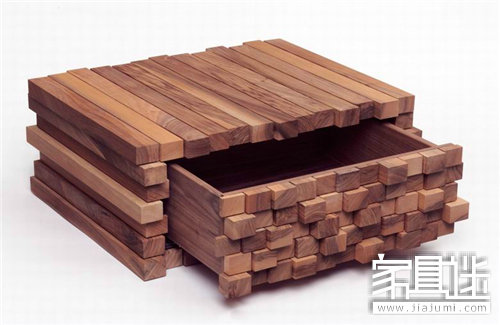Mansonia altissima Mansonia altissima, also known as African Black Walnut, is a species from the sycamore genus. It is highly valued for its rich color variations, ranging from taupe to chocolate, especially in wood sourced from countries like Ghana, Nigeria, Cameroon, and Ivory Coast. This beautiful grain makes it a popular choice in interior design and furniture making. The tree, commonly referred to as Manson Indus or African Black Walnut, can grow up to 40 meters tall with a straight trunk and branches starting at about 16 meters. The sapwood is grayish-white and typically 2–4 cm wide, contrasting sharply with the heartwood, which has a slight purple tint and deep or shallow streaks. This wood is native to West Africa and is known by various trade names across different regions. In Ghana, it's called Apromo; in France, Bete; in Ivory Coast, Bete; in Nigeria, Ofun; in Cameroon, Koul; and in Britain, Mansonia. Local names include Oprono, Pruno, Nyankom, Boroua, Odo, Urodu, and Purono. Mansonia altissima is often used as a substitute for American Black Walnut due to its similar appearance and workability. It features a straight grain and fine texture, making it ideal for cabinetry, car dashboards, decorative veneers, and inlay work. It’s particularly suitable for applications where a dark, elegant wood is desired. However, individuals with sensitive skin or allergies should be cautious, as sawdust may cause irritation. The wood has a lustrous finish, no strong odor, and a fine, uniform structure. It is medium-weight, with good drying properties and strength. Its air-dry density is approximately 0.65 g/cm³. Mansonia has excellent bending and machining properties, both manually and mechanically. It glues and nails well, and finishes smoothly with paint or varnish. While it dries quickly, knots may sometimes develop small cracks. The heartwood is highly resistant to decay and termites, while the sapwood absorbs preservatives more easily. It is widely used in high-quality furniture, cabinetry, flooring, piano keys, and joinery projects. Related reading: What kinds of walnuts are there? What is the difference between American black walnut and European walnut? Octea porosa Octea porosa, also known as Imbuia or Brazilian Walnut, is a hardwood native to southern Brazil. It is often referred to as "Brazilian Walnut" in local markets and can reach heights of up to 40 meters with a trunk diameter of around 1.8 meters. This wood is known for its warm, rich tones that range from yellowish-brown to olive brown and even dark chocolate. Its striking strip pattern and fine, uniform structure make it visually appealing and suitable for high-end applications. It is considered a premium material for furniture and is often used as an alternative to American Black Walnut. It is easy to dry, though it can be prone to cracking if not handled properly. Machining is straightforward, and it offers good glue, nail, and paint adhesion. However, some users report an unpleasant smell from the sawdust, and in rare cases, it may cause skin irritation. It has excellent durability, resisting termites and other pests. The heartwood has moderate preservative penetration, while the sapwood is easier to treat. It is widely used in high-end furniture, cabinetry, flooring, decorative veneers, and joinery products. As a cost-effective and aesthetically pleasing alternative to American Black Walnut, it remains a popular choice among woodworkers and designers. JIANGMEN XINXIN METAL PRODUCTS CO., LTD. , https://www.bbqoutdoorgrill.comCommonly Used Substitute Woods

